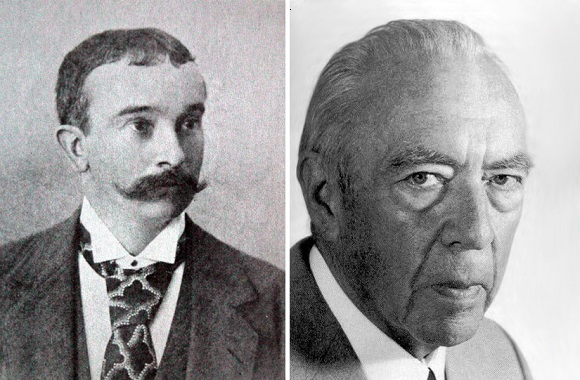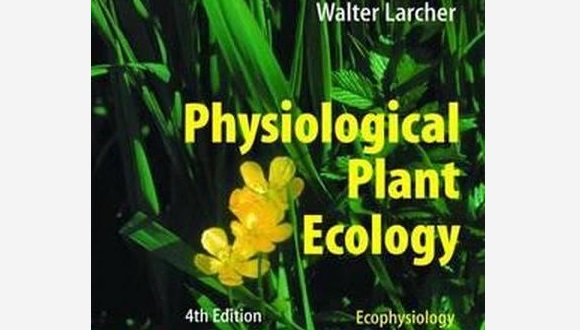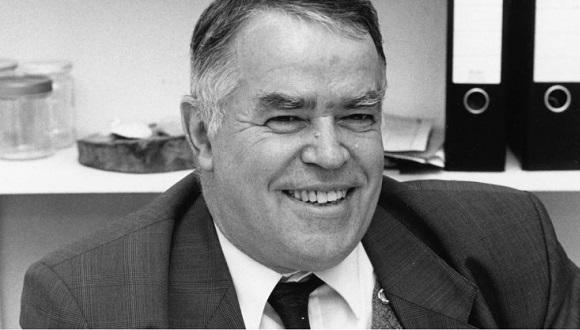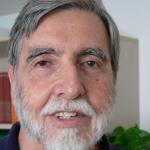Geobotany and plant ecophysiology in Europe: some masters
A review about the history of the most outstanding authors in the fields of geobotany and ecophysiology.

In the introduction of his Ecología, Margalef says that "a large part of ecology is physiology outdoor", that is what we call ecophysiology, and the analytical decomposition of the environmental factors and the development of measurement tools permitted to relate the factors intensity with organism’s physiological responses.
Early steps were related to agriculture (Theophrastus already wrote about the accumulation of reserves in the seeds and the conditions for germination). Today, the ecophysiology of the plants has a great development towards the molecular basis of plant responses, trade-offs between life cycles traits, plants responses to global change, plants modified genetically, stoichiometric compositions, relationships with symbionts, parasites, pollinators, etc., and it does this using a considerable technological arsenal.
But here I want recall the geobotanical roots of some European scientists that were relevant in the development of plant ecophysiology. The Danish Johannes Eugenius Bülow Warming (1841-1924), usually considered as the founder of ecology, was a geobotanist with a high concern on life-forms and Andreas Franz Wilhelm Schimper (1856-1901) wrote Pflanzengeographie Physiologischer auf Grundlage, or Plant geography on a physiological basis.

Heinrich Walter (1898-1989) was the first to employ measurements on plants state and function to study their adaptations to their habitats in many different sites of the world. Born in 1898 at Odessa from a German family, he went at the University of Tartu to study with Peter Claussen (1977-1959) and he wrote his PhD in Jena. He worked on desert’ plants in Tucson with F. Shreve (1878-1950) and E. J. Weaver (1884-1966) and after became the director of the Stuttgart’s Botanical Institute. He wrote the monumental Die Vegetatio der Erde (1964-68). He was the mentor of Helmut Lieth (they published jointly Climate chart world atlas, 1960-67), Erich Oberdorfer, Heinz Ellenberg, and Helmut Freitag, Sigmar Breckle and others.
When I was doing my PhD research at Monegros (presented in 1973 and directed by Bolòs), I visited Walter and he accepted to visit us for three weeks. Walter showed me to take fast and simple measures of transpiration, water deficit and other variables. Two of their books were translated in Spanish (Zonas de vegetación y clima, in 1977, and Los sistemas ecológicos de los continentes, 1981, both by Ed. Omega with my assessment) and the first one in Catalan by Bolòs initiative (Vegetació i climes del món, Universitat de Barcelona, 1976, translation by O. de Bolòs, including a paper by Walter on Monegros vegetation). Walter also published the series Vegetation Monographs of World Regions.
Helmut Lieth (1925, Rhineland) went to Stuttgart in 1960 and was between the earlier students of the primary production at a global scale. He worked in Venezuela, Hawaii and Osnabrück. I meet him in several seminars and conferences. Heinz Ellenberg (1913-1997) studied in Hanover and the phytosociologist Reinhold Tüxen (a close colleague from Bolòs) directed his thesis. He stayed at Montpellier with J. Braun-Blanquet, then worked with Walter at Stuttgart and in 1966 he went to Göttingen. He was interested by the definition of the plant’s niche through preference’s scales of factors such as light, temperature, continentality, nutrients, soil moisture, pH and salinity.

The Danish Frode E. Eckardt (1923), working in the CEPE of Montpellier, was also interested in calculating primary production from the leaf to global scales; he was a precursor of the ecotron (he named it) and was very involved in the IBP, for which he wrote Methodology of plant eco-physiology. In 1967, Harold Mooney came to stay for a time with Eckardt at Montpellier. I meet Eckardt a short time later.
Walter Larcher (born in 1929 in Kitzbuhel, Austria) studied in Innsbruck and worked at Vienna, Padua, Sapporo and Seattle. His book Physiological plant ecology has been reedited a number of times. One previous brief book, was translated to Spanish (Ecofisiología vegetal, Omega, 1977) with my assessment to the publisher. In 1994, I met Larcher and Loretta Gratani in Trento to write an unsuccessful European project. Otto Ludwig Lange (1927, Darmstadt) promoted the ecophysiological approach to photosynthesis in plants of tropical and arid environments. He worked in the Negev during the 1960s and 1970s with M. Evenari and then in many other places of the world, including some Mediterranean areas of Portugal.
All these authors are related to the geobotanical tradition of Warming and Schimper. Braun-Blanquet himself (1884-1980), whom I knew around 1969, made some ecophysiological observations to better understand plant communities. Walter and Lieth were interested in plant formations in relation to the climate. Ellenberg (1913-1997) was a mixture of geobotanist and ecophysiologist, as show Mitteleuropas Vegetatio mit den Alpen (1963) or Tentative physiognomic-ecological classification of plant formations of the Earth (1967), the last written with Dieter Mueller-Dombois.
The list could be of course longer, but I do not pretend to make a history, just to point out the links between geobotany and ecophysiology in the attempts to understand the distribution of plants and the characteristics of plant formations in the beginnings of European (and Russian and North-American) plant ecophysiology. Not surprisingly, considering these precedents, plant ecophysiologists such as H. Mooney, C. Field or J. Peñuelas have been at the forefront of studies on responses to global change.







